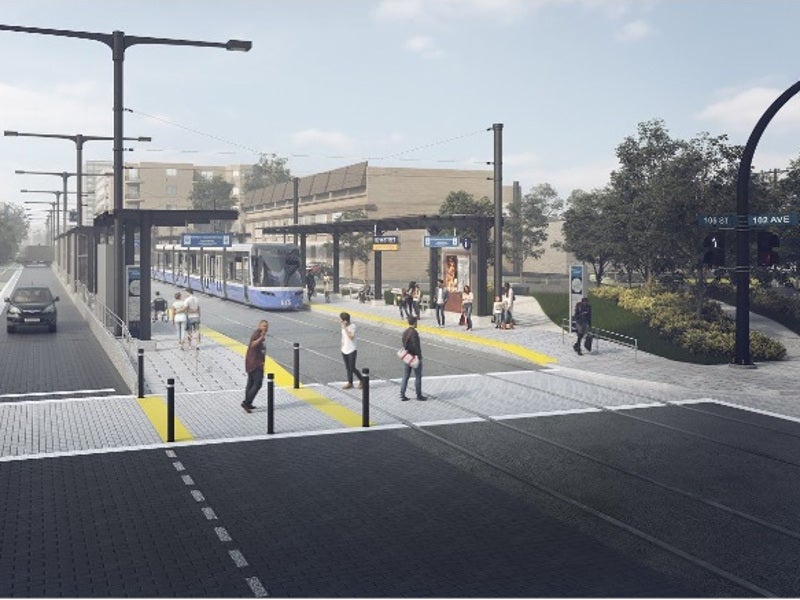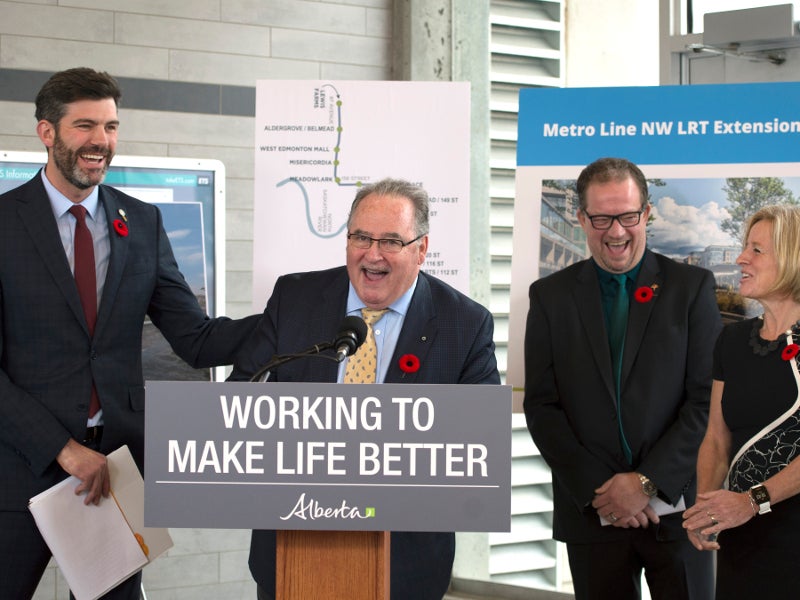Valley Line West is the second stage of the 27km Valley Line light rail transit project (LRT) being developed in Edmonton, Canada.
The C$2.6bn ($1.98bn) project will extend the Valley Line LRT from 102 Street downtown to Lewis Farms.
The light rail network extension plan was initially approved by the Edmonton City Council in June 2009, while the concept plan was approved in January 2011. The preliminary design phase was initiated in 2013.
Multiple public information sessions were conducted during the preliminary design phase until April 2019.
Construction on the Valley Line West LRT project is scheduled to begin in 2020, while operations are expected to begin by 2027.
Valley Line West LRT project details
The Valley Line West LRT project will extend the existing 12km Valley Line LRT by 14km. The line extension will originate at Mill Woods in south-east Edmonton and terminate at Lewis Farms in west Edmonton.
It will have a total of 16 stations, including 14 street-level stations and two elevated stops at Misericordia Hospital and West Edmonton Mall.
The 16 LRT stations will be Lewis Farm, Aldergrove / Belmead, West Edmonton mall station, Misericordia, Meadowlark, Glennwood / Sherwood, Jasper Place, Stony plan road / 149 ST, Grovenor / 142 ST, Glenora, 124 street, Brewery / 120 ST, The Yards / 116 ST, Macewan Arts, and Mill Woods.
The light rail project will also include the construction of two bridges at Groat Road at Stony Plain Road and another crossing at Anthony Henday Drive at 87 Avenue.
It is expected to reduce the travel time between Lewis Farm and Downtown by approximately 35 minutes.
The line will offer the same price, security and high-quality services across the entire ETS system and will feature transit points.
Rolling stock
Valley Line West LRT line will feature low-floor urban vehicles, which will offer step-free boarding to passengers.
Trains will operate at community traffic speeds in congested areas, eliminating the need for crossing gates, flashing lights, and warning bells.
Trains will reduce traffic congestion and offer a comfortable travel experience to passengers by running at five-minute frequency during peak hours.
Valley Line West LRT financing
The project will be funded by the Edmonton City Council with the assistance of federal and provincial governments.
Edmonton City Council approved C$444m ($338m) of municipal funding to support the development of the project in April 2019.
Additionally, the project received C$1.04bn ($792m) from the Alberta Government in November 2018.
Benefits and ridership
The Valley Line west corridor is expected to witness a daily ridership of 40,000 passengers in 2027, rising up to 60,000 in 2047.
The project is expected to generate direct and indirect jobs for 20,000 people in Alberta and 5,300 jobs in the rest of Canada, during construction, operations and maintenance phases.
Contractors involved
Evaluation Committee of the City of Edmonton selected three teams for the railway line.
Shortlisted teams include Flatiron, AECON, Dragados Valley Line West joint venture (JV), Urban Mobility Partners, and the WestLINK Group.
Flatiron, AECON, Dragados Valley Line JV was formed by ACS Infrastructure Canada, AECON Concessions, and HOCHTIEF PPP Solutions North America.
Urban Mobility Partners is a consortium of Eurovia Infra, Graham Capital Partners, and Parsons. The WestLINK Group teamed up with SNC-Lavalin Capital and SNC-Lavalin for the project.
Shortlisted teams will be required to submit a request for proposals for the next stage of the procurement process.
The selected contractor will work on the design and construction of the project, as well as partially finance it.










